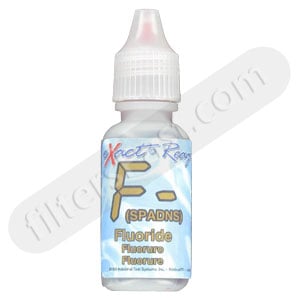Today’s question came to us from ‘Malli’ who asked, “tell me simple method to find out the flourine percentage .Thanque”
For the sake of this article, and because it would make his/her inquiry make more sense, we will assume that Malli intended to ask for a method of testing for FLUORIDE levels in water.
Regretfully we have not heard of any ‘new’ methods a person can use to detect fluoride levels in drinking water since we last addressed this topic. Therefore we will continue to suggest using a meter such as the eXact Micro 7+ Water Testing Meter that uses Fluoride (SPADNS) Reagent to detect fluoride levels in water as low as 0.1 ppm and as high as 1.1 ppm.
One could also use the mail-in fluoride testing services of a company called National Testing Laboratories to determine how much, if any fluoride their drinking water contains.
So, Malli, once you determine if your water contains fluoride, next you will need to decide if you wish to remove or reduce that fluoride level… assuming you have fluoride in your water to begin with.
Removing/Reducing Fluoride Levels in Drinking Water?
When it comes to finding an effective means of reducing fluoride levels in drinking water, thus far our ‘research’ always points us down the same path… towards reverse osmosis water filters. The unit you see on the right, the Pentek RO-3500, has gone through testing and gotten certified by NSF/ANSI to Standard 58 for the reduction of Pentavalent Arsenic, Barium, Cadmium, Copper, Hexavalent & Trivalent Chromium, Cyst, Fluoride, Lead, Nitrate/Nitrite, Radium 226/228, Selenium, TDS and Turbidity.
Though definitely NOT the most expensive unit on the market, this filter has successfully passed third party testing, can produce nearly 8 gallons of crystal clear, filtered drinking water per day, and does so while reducing fluoride levels by more than 90%.
Moral of the story?
You will never know exactly how much fluoride, iron, copper, manganese, chlorine, salt, or other unwanted contaminants your water contains until you perform the appropriate tests on your water. Then, and only then, will you have the ability to make an educated decision regarding water treatment options.







